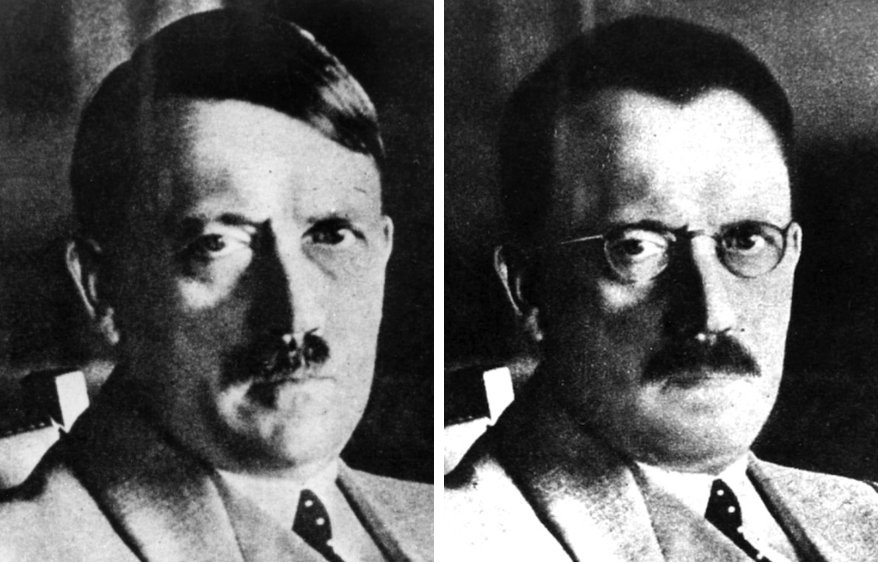The phenomenon of Hitler glasses, characterized by their unique design and historical significance, has captured the curiosity of many. These distinctive spectacles, often associated with the infamous dictator Adolf Hitler, evoke a wide range of emotions and discussions about their place in history. While they may seem like a mere fashion statement, the implications of wearing such eyewear extend far beyond aesthetics. Understanding the background and significance of Hitler glasses provides insight into a complex era that reshaped the world.
In the early 20th century, Hitler glasses became emblematic of a man whose actions would forever alter the course of history. The round, wire-rimmed spectacles are not only iconic in their appearance but also serve as a symbol of an oppressive regime that instigated immense suffering and tragedy. As we delve deeper into this topic, we will explore the origins of these glasses, their connection to Hitler, and their impact on modern culture.
The fascination with Hitler glasses is not solely rooted in their association with a notorious figure; it also raises questions about identity, representation, and the relationship between fashion and ideology. As we unravel the narrative surrounding these glasses, we will examine both their historical context and their contemporary relevance. Join us as we navigate through the multifaceted world of Hitler glasses and uncover the stories they tell.
What Are Hitler Glasses?
Hitler glasses, often recognized by their round shape and thin wire frames, are a specific style of eyewear that gained notoriety during the era of Adolf Hitler. These glasses are typically characterized by:
- Round lenses that offer a distinct appearance.
- Thin, wire frames that contribute to a minimalist aesthetic.
- A cultural and historical significance that resonates with many.
Who Was Adolf Hitler?
To understand the context of Hitler glasses, it's essential to explore the life of Adolf Hitler himself. He was born on April 20, 1889, in Braunau am Inn, Austria. Hitler rose to power as the leader of the National Socialist German Workers' Party (Nazi Party) and became Chancellor of Germany in 1933. His policies led to World War II and the Holocaust, resulting in the deaths of millions.
Hitler's Early Life and Rise to Power
Hitler's early life was marked by struggles, including a failed career in the arts and a tumultuous relationship with his family. His experiences in World War I deeply influenced his ideologies and ambitions. After the war, he joined the Nazi Party and quickly ascended to leadership, ultimately becoming a dictator known for his charismatic oratory and ruthless tactics.
Key Events in Hitler's Life
| Year | Event |
|---|---|
| 1889 | Born in Braunau am Inn, Austria |
| 1913 | Moved to Munich, Germany |
| 1920 | Joined the Nazi Party |
| 1933 | Appointed Chancellor of Germany |
| 1945 | Commits suicide in Berlin |
Why Did Hitler Wear Glasses?
Hitler's choice to wear glasses was primarily due to his poor eyesight. The round frames became a defining aspect of his image and added to his distinctive persona. Eyewear often reflects personal style, but in Hitler's case, it became a part of a larger narrative that included power, control, and fear.
How Did Hitler Glasses Become a Symbol?
The round glasses worn by Hitler transcended personal fashion to become a symbol of the Nazi regime. Their association with Hitler and the horrors of World War II have led to a complex relationship with this eyewear in popular culture. They represent not only the man but also the ideologies he propagated, making them a focal point for discussions about history and memory.
What Is the Legacy of Hitler Glasses Today?
In contemporary society, Hitler glasses have been co-opted in various ways, often serving as a visual shorthand for discussions about totalitarianism, oppression, and the darker aspects of history. They appear in films, literature, and art, reminding us of the past while prompting conversations about the present.
Are Hitler Glasses Fashionable or Offensive?
The question of whether Hitler glasses are fashionable or offensive is a contentious one. Some may view them as a vintage style, while others see them as a reminder of a painful history. The line between fashion and ideology becomes blurred, leading to debates about appropriation and respect for historical context.
How Can We Use History to Understand Fashion?
Fashion is often intertwined with cultural narratives, and understanding the history behind certain styles can provide valuable lessons. The significance of Hitler glasses reminds us that every piece of clothing or accessory carries meaning and context. As we engage with fashion, it is essential to consider the stories behind what we wear and how they shape our identities.
Conclusion
Hitler glasses are more than just a style of eyewear; they encapsulate a complex history that reflects the power dynamics of the 20th century. By examining their significance, we gain insight into the interplay between fashion and ideology, as well as the importance of remembering our past. As we move forward, let us remain vigilant about the narratives we choose to embrace and the symbols we wear.


